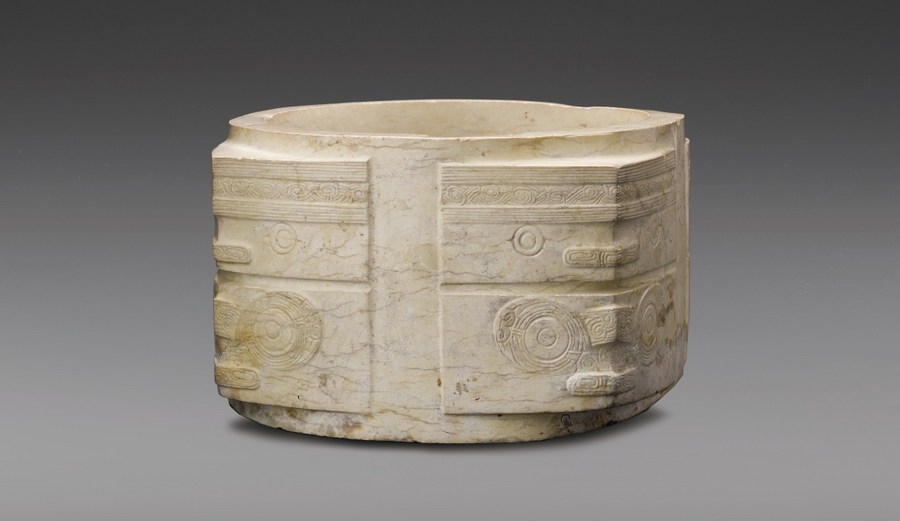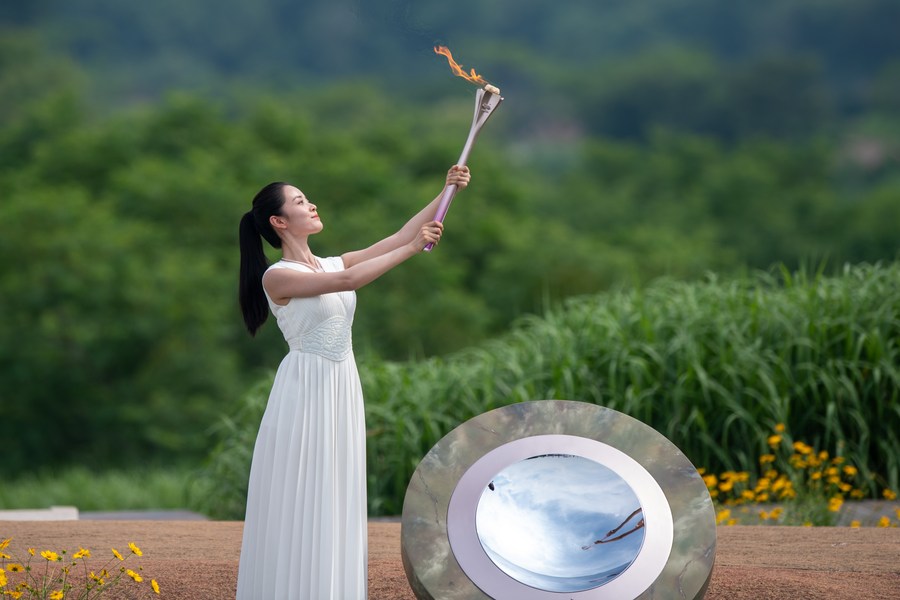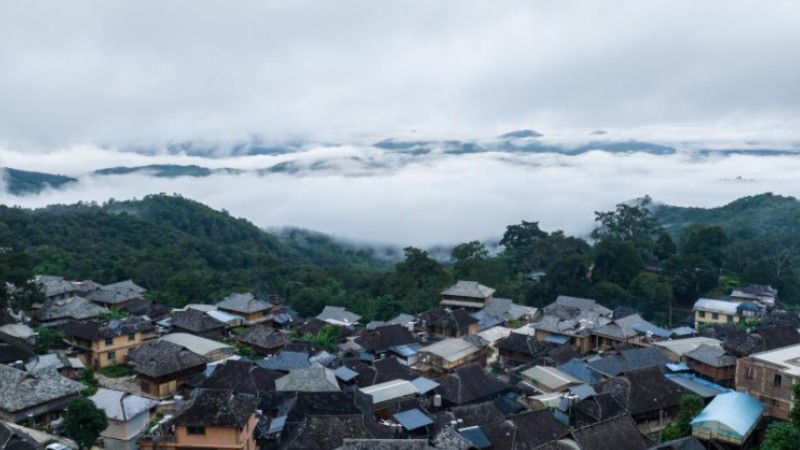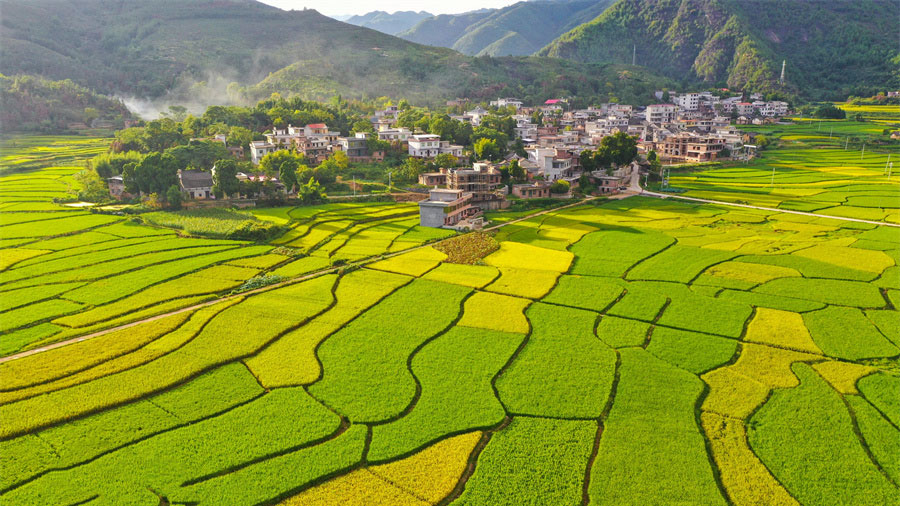5,000-year-old Liangzhu jade culture shines at Hangzhou Asian Games
HANGZHOU, Sept. 21 (Xinhua) -- The 19th Asian Games is just around the corner. Hangzhou in east China's Zhejiang Province, as the host city, is displaying the profound Chinese history through the jade culture with a modern touch.
The glistening Liangzhu jadeware with over 5,000 years of history, a signature cultural element of Liangzhu ruins, a UNESCO World Heritage Site, has been reflected in the design of the upcoming event's torch, medals, and venues, as well as the decoration found on the head of one of its mascots.
"Yucong," or "Jade Cong," which is a jade tube with a quadrilateral exterior and a circular inside, is an ancient ritual article bearing testimony to the existence of at least 5,000 years of Chinese civilization.

This undated photo shows a Yucong which was excavated at the Yaoshan Site in 1987 and now has been kept in the Liangzhu Museum. (Liangzhu Museum/Handout via Xinhua)
The Asian Games flame, first lit at the Liangzhu ancient city in Zhejiang, was carried across the province in the run-up to the grand opening of this sports fiesta, slated for Saturday.
"Yucong," which once made Liangzhu famous worldwide for its exquisite jade carvings, again takes a prominent position in the excitement and anticipation of the Chinese people as they eagerly await the splendid games to be hosted in their country.
Inscribed on the World Heritage List as a cultural site in July 2019, the Archaeological Ruins of Liangzhu City, located in today's Hangzhou, have secured worldwide recognition of the self-evident existence of the Chinese civilization for over 5,000 years. The ruins were once the center of power and belief of an early regional state in the lower reaches of the Yangtze River in Late Neolithic China.
Wandering on the streets of Hangzhou in recent days, one can hardly ignore the adorable Asian Games mascots. The three mascots are inspired by the modern city's three sources of ancient pride: the Liangzhu ruins, the West Lake, and the Grand Canal.

A girl poses with Chenchen, Congcong and Lianlian (from L to R), mascots of the 19th Asian Games, at the Gongshu Canal Sports Park in Hangzhou, east China's Zhejiang Province, Nov. 9, 2021. (Xinhua/Huang Zongzhi)
The yellow mascot flanked by the other two mascots is named "Congcong" in Chinese, a nickname derived from "Yucong," the jadeware.
"Asian countries have shared a common cultural theme since ancient times and that is exactly what we want to convey through Congcong's design -- the sense of a shared future for humankind," explained Zhang Wen, chief designer of the mascots for the Hangzhou Asian Games.
The medals of the Hangzhou Asian Games are named "Shan Shui," which means mountains and lakes in Chinese.
"The design of the medals is inspired by the jade, integrating its square outer shape with the circular inner shape of the medal. The coexistence of square and circle represents the practice of upholding unity in diversity and seeking harmony in differences," said Zhang Junjie, head of the School of Industrial Design at China Academy of Art.
Besides, the Games' torch, named "Eternal Flame," has a burner nozzle design based on the earliest oracle bone inscription of "Cong."

The flame is lit during a flame lighting ceremony for the 19th Asian Games at the Archaeological Ruins of Liangzhu City park in Hangzhou, east China's Zhejiang Province, on June 15, 2023. (Xinhua/Jiang Han)
As China digs into its past, it has found that jade artifacts have always been closely intertwined with the mainstream development of Chinese civilization, making jade relics a crucial clue to studies on the evolution of its ancient glories.
"At the very beginning, jade was merely an ornament. Later on, some sacred significance was attached to jadeware, associating it with power and belief, just like what we see in Liangzhu Culture," said Ma Dongfeng, executive director of Liangzhu Museum.
It is the over 5,000-year-old jadeware that makes the Hangzhou Asian Games unique and gives it character, said Ma.
"Through grand occasions like the Asian Games, I hope more people will get to know our fine traditional Chinese culture, while better spreading our Liangzhu stories and China stories to the world," Ma noted.
Photos
Related Stories
- In pics: beach volleyball match at 19th Asian Games
- Hangzhou Asiad to stage opening ceremony with digital, cultural features
- Press conference held on preparations for opening ceremony of Hangzhou Asian Games
- Highlights of sailing races at 19th Asian Games
- Table tennis preview: Star-powered China targets clean sweep at Asian Games
Copyright © 2023 People's Daily Online. All Rights Reserved.









